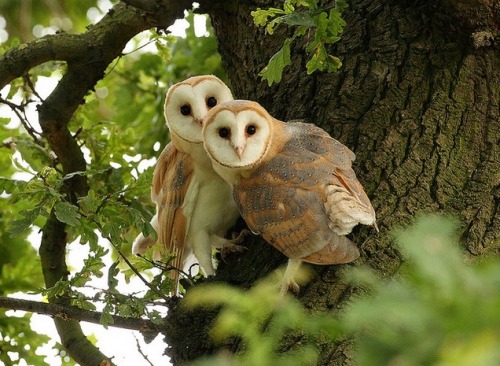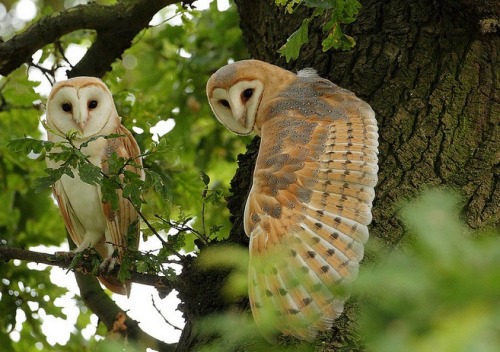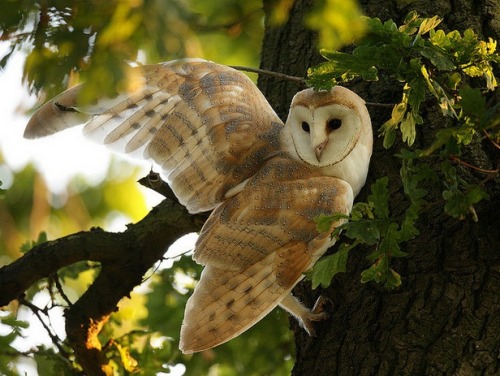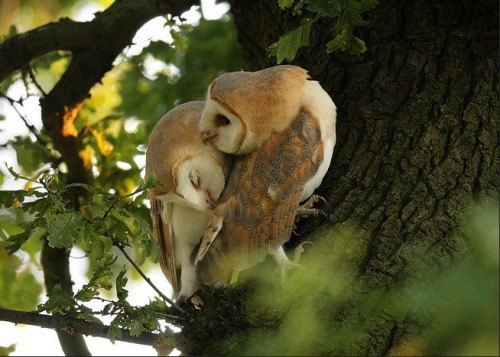Liber Nox:
"[A theme of sacrifice can] be found in folk traditions relating to the scarecrow as the spirit of the harvest or corn king. In several English counties the scarecrow was known as a mawkin, an old dialect name for a ghost or ghoul. In Yorkshire, Warwickshire and Devon it was called a mummet or mommet meaning a spirit that walks at night. In Old Cornish a bucca can refer to a scarecrow, ghost or goblin and in northern England and Scotland it was known as a tatty-bogle. Tatty means potato and bogle is derived from bogey meaning any evil spirit or malicious faery, hence the bogeyman used to scare naughty children.
In Shakespeare's play The Merry Wives of Windsor the scarecrow is called a Jackalent or Jack of Lent. This refers to the old and rather curious custom of pelting any stranger visiting the area with sticks and stones. By the 19th century a puppet or scarecrow had replaced a human victim. It was beaten with sticks in a folk ritual to increase the fertility of the fields and ensure there was a good harvest. Originally the mawkin was the name for a bundle of rags on a stick used to clean out bakery ovens. After use it was placed in the fields to symbolically promote the growth of the grain used to bake the bread. When it was windy the rags fluttered in the breeze and were seen to scare off crows and other birds attacking the new crops.
Sometimes in the old days a man desperate for any work was hired to be a human scarecrow and stand all day in the field warding off the birds. Some folklorists trace this custom and indeed the origin of the scarecrow back to human sacrifices in pagan times to protect the crops and livestock from disease and bring a fertile harvest. In this respect it could be a more socially acceptable and civilised substitute for the divine king ritually murdered so his blood fertilised the land.
Dr Jacqueline Simpson of the Folklore Society believes the scarecrow may have originated in the ugly or aggressive effigies once placed in the fields to drive away evil spirits. She has linked them to the puppets in European folk customs that were destroyed in spring fertility rites as symbolic representations of winter and death. After the coming of Christianity, farmers in Brittany in northern France placed a life-sized wooden image of the crucified Jesus in the fields instead of these puppets, as they believed it would produce a good harvest.
Everywhere in folklore there is evidence of the association of scarecrows with the supernatural, ghosts and the spirits of the dead. In North America there was a folk belief that scarecrows came alive on the night of Hallowe'en (October 31st) and roamed the countryside. The popular American author Nathaniel Hawthorne wrote a short story based on this belief, which was common knowledge in his home village of Salem, famous for its witch-trials. In the story, which is similar to the Italian fairy tale of Pinocchio, an old witch called Mother Rigby made a scarecrow from a broomstick and used a spell and a tune played on a pipe to bring it alive."
Liber Nox:
A Traditional Witch's Gramarye
Chapter 9: 'Michaelmas'
by Michael Howard
More Posts from Saintedsorcery and Others

Werewolf History Project: Prehistory-
First part of a project looking at the history of werewolves and werewolf myths! Starting with early prehistory and the emergence of stories, especially the advent of animal/human figures.


By staff, stone, flame, and bone! 🐐
Heresy As Healing

When I first got into paganism and witchcraft, I did what I think a lot of people do and took a very hard turn in to “fuck Christianity!” The literature and discourse of the early and mid 2000′s didn't help this mindset either. There was a lot of talk about how Wicca (I was an eclectic wiccan at the time) was the survival of an ancient pre-Christian religion and that Christianity stole its practices, holidays, and pretty much everything else, from paganism.
Needless to say my religious baggage went unpacked for YEARS?
That was until i left my more Wicca-inspired practice and found “traditional witchcraft”. In these spaces i found something that i had been lead to believe was impossible: Witchcraft and Christianity coexisting. Not only coexisting, but a style of witchcraft created by almost biblical teachings on their heads and pulling out the magic. Lucifer and Azaezel being sources of witch-power, Cain being the first Sorcerer, the witch’s horned one as the Devil! Seeing the witch-trials as not simply a tragedy, but pulling wisdom and magic from the confessions. All of this was new and exciting!
Beginning my research into this amazing new avenue was the first step in healing my heart and soul from the hitherto ignored scars left by my time in the Church. The more I walked this strange and crooked path, the more I found value in heresy. Calling to the Man in Black at a crossroads, flying from my body to the Witch’s Sabbath, reciting the Lord’s Prayer backwards. All of these were powerful in ways I never thought they could be. I laughed at myself. If you had told me at 18 that in 5 years id be dancing with the Devil, I would have raged about there being no Devil in the Craft. While I understand now why the 90s-2000s were so “anti-devil” and “love and light” I’m glad that we can now look at witchcraft and its history with a more nuanced lens.
Now in some ways I've come full circle. I am not a Christian, and I don't think i ever will be, but I pray to saints, I have a growing interest in Mary, I use psalms and bible verses in my spell work, i craft rosaries as a devotional act to the spirits I serve and honour. My patron goddess has even started to come to me with Marian imagery and titles.
In Fayerie Traditionalism/Fayerism we’re encouraged (sometimes outright told) to avoid and expunge all Abrahamism from our lives and certainly from our Sorcery. We’re told that there is no magic or value in Abrahamic traditions. This has been my biggest hurdle with this path. For me, i find so much power in using folk magic that would be deemed “witchcraft” by the Church, regardless of how much scripture is in it. I think to continue this idea of “there's no place for Christianity in witchcraft” does such a disservice to the history of witchcraft in Europe and the US. So many practices would not exist if our ancestors had not learned to synchronize and hide in plain site. I’m not calling on God when I use a psalm to heal, I'm speaking words of power that have been spoken for centuries by other healers and workers. When I pray the rosary, I do it to honor my ancestors who found comfort in it.
For me, the catholic folk magic and heretical aesthetics do not deter me from path of Fayerie Traditionalism, it is simply another avenue to the same goal. The spirits of this tradition have not shown any ill-will to how I work. Gwynn still comes when I call him “Devil” or “Master” and Gwynnevar herself told me to call her “Our Lady Down Below” or “Our Lady of the Mound/Hill” Taking back my power from Christianity and seeing the Wisdom in its heresy has made me a better person and a stronger sorcerer. I have not lost my faith in the Fayerie People but have come closer to them.
All this is to say:
Be free
Be powerful
Be a Heretic
Nema





The book says that these are talismans that are meant to be re drawn on paper and carried with you to give the you these abilities.
The Book of Oberon
TIL that Aleister Crowley literally told people that he was the Beast from Revelations and all I could think about is how easily I could picture him as a controversial youtuber/tiktokker.
“You are reborn with the roses, in every spring.”
— Juan Ramón Jiménez, from The Selected Writings; “Love,” wr. c. 1911
Half-formed ramble about magical identity

I’ve recently started coming to the realisation that, well that I don’t think “witch” really fits me anymore. This isn’t to say that I still don’t practice witchcraft or that it would be wrong to call me a witch, but more that my personal craft has developed in way that makes me question if it’s a moniker that still fits me.
Over the past several years, my craft has been moving more and more into the realm of charms and cures. I craft simple charms for people to gain luck and love. I walk folks through the processes of pulling off stagnant energy and uncrossing work. I still get requests to cleanse and bless homes. Owning a home and land for the past year has pushed me even more into the role of “village witch” I’ve started learning the language of my land, looking at potential plant and animal allies around me.
I think the two biggest influences for this change are my joining Fayerie Traditionalism/Fayerism and my study of folk magic
Fayerism focuses on spiritual ecology and the harmonious relationship between the Seen and Unseen worlds. Folk magic (as a magic of the people) is all about domestic life of the individual and the community.
All this is just a round about way of saying that I feel as if I’m growing into more of a “cunning woman” than a witch. My arte focuses on healing ailments (alongside modern medicine of course), attracting prosperity, and blessing those around me. I use my craft to help those around me whenever I and however I can, whether they be human or other-than-human persons.
And to be honest I’ve been moving away from the “witch” title for a while, although privately. Testing different mantles to find something that fit, sticking with “sorcerer/sorceress” for the most part. It wasn’t until last night that it stuck me how much like the cunning folk of Europe I’ve become.
I won’t correct any that call me “witch”, for as I said, I still practice witchcraft alongside other forms of magic. I’ll still be using the hashtag to appease the algorithms and I’ll still promote my services as a witch, but I think I’m going to start referring to myself as a “cunning woman” and see how that feels. I might even look into regional variants of the profession and see if the French had a localised term for the “cunning person/folk healer/white witch” as a nod to my ancestry





{Barn Owls in The Oak} by {Mike Rae}
What do you think of Joyofsatan.org? They claim to follow the Sumerian God Enki-Satan, they’re pro-choice, they follow gay Pagan Gods and they’re the largest Satanist group in the world.
Well I’d never heard of them before now. I just did a quick look at their website and although they swear that Satanism isn’t a reaction to Christianity (which I disagree with because look at Anton LaVey) their homepage is just paragraphs of how “Judeo/Christianity” (those are two separate religions but okay) is evil and terrible and the source of everything wrong with the world. Just seems like they’re trying too hard. I also really disagree with their stance on Satanism being the oldest/truest religion in the world. It looks like they’re just slapping satanic aesthetics/concepts onto older religions and claiming it as truth which just historically isn’t the case.
Again this is all just initial reactions to their homepage, I know nothing about them on a deeper level and hadnt heard of them before today so take all that with a grain of salt I guess.

Your Sight shall be in my Sight
in whose name you rest here
I will not disturb you
but hoped that you
in the name of peace may sleep
so that I may see the Hidden
and see its power
hear in celebration
and help in need.
Could you
O Holy Ghost
give to me of your power
In the name of the Holy Crucified One
Amen.
— From The Graveyard Wanderers— The Wise Ones And The Dead In Sweden by Thomas Johnson
These words were uttered as their speaker crossed themselves over a gravestone in a churchyard. When the speaker had finished the invocation, they then made the sign of the cross over each of their eyelids, three times. To the Klok— “The Wise Ones”, the folk healers and magicians of Scandinavia— graveyards, burial mounds, old execution sites and other such areas where the spirits of the dead dwelt were sacred places. In Sweden, these individuals were known as Kyrkogårdsgångare, or Graveyard Walker. The term is related to gengångare, which in Swedish means “those who walk again”. The word can be translated as “ghost”, but their form is entirely corporeal; not see-through or specter-like as phantoms in the Anglosphere tend to be.
The dead serviced the Graveyard Walkers in many ways. One could summon the spirits of the departed and ask for their service in everything from revealing secrets and hidden knowledge to obtaining lottery numbers. Or, a Graveyard Walker could utilize the dead in a more tangible fashion: both the left collar bone of an elderly man and the left ring finger of a corpse were considered to be among the best amulets for protection. (However, before the Wise One left the earthly plane, they must of course return the borrowed bone back to its original resting place.) Everything, right down to the very soil of the graveyard, was used: from rubbing Graveyard dirt on the skin to cure rashes, to drinking it in a slurry to restore a loss of appetite.
But how did one become a Graveyard Walker and a Wise One? There is the aforementioned invocation of course, but there was also the ancient practice of Uttesittning. Uttesittning is a ritual where one meditates in nature from sunset to sunrise, opening the soul and merging with the world of the spirits. There is one legend where one would go to a churchyard or any other places affiliated with burial or the dead for three consecutive Thursday nights to perform an Uttesittning ritual (Thursdays were important, as they were sacred to the old god Thor). On the third and final Thursday, a dark man might perhaps appear and reward the one performing this ritual with a gift. There are some stories that claim that the gift was a Book of Black Arts— a Svarteboken, or “black book”, also known as a Cyprianus (named after St. Cyprian). It was said these Black Arts Books would be written in blood, or written on black pages with white ink. A Wise One would keep all their spells in such books, which contained everything from Kabbalist literature to farm and home recipes.
The Wise Ones and Graveyard Walkers are endlessly fascinating to me, as well as folk magic in general. I hope to create many more artworks inspired by this topic, and I hope that I’ve piqued your interest in it as well!
For more books on this subject:
Gårdbäck, Johannesburg Björn. Trolldom: Spells and Methods of the Norse Folk Magic Tradition. The Ironwode Institution for the Preservation and Popularization of Indigenous Ethnomagicology (YIPPIE), 2015.
Johnson, Thomas. The Graveyard Wanderers — The Wise Ones and the Dead in Sweden. Society of Esoteric Endeavor, 2013.
Sibley, J.T. The Way of the Wise. XLIBRIS, 2013.
A special thanks to my friend Eli, for all your insight into Swedish folklore and folk magic!
-
 forthistleandbracken liked this · 3 months ago
forthistleandbracken liked this · 3 months ago -
 jimmysgay reblogged this · 10 months ago
jimmysgay reblogged this · 10 months ago -
 emilytheghostwitch reblogged this · 1 year ago
emilytheghostwitch reblogged this · 1 year ago -
 sapphosembrace liked this · 1 year ago
sapphosembrace liked this · 1 year ago -
 oddlyexquisite liked this · 1 year ago
oddlyexquisite liked this · 1 year ago -
 refer12 liked this · 1 year ago
refer12 liked this · 1 year ago -
 refer12 reblogged this · 1 year ago
refer12 reblogged this · 1 year ago -
 eiochaidh-darachrugadh liked this · 1 year ago
eiochaidh-darachrugadh liked this · 1 year ago -
 blaquesails liked this · 1 year ago
blaquesails liked this · 1 year ago -
 wirogweltis liked this · 1 year ago
wirogweltis liked this · 1 year ago -
 jimmysgay reblogged this · 1 year ago
jimmysgay reblogged this · 1 year ago -
 jimmysgay liked this · 1 year ago
jimmysgay liked this · 1 year ago -
 toowolfdelusion liked this · 2 years ago
toowolfdelusion liked this · 2 years ago -
 orisartnstuff liked this · 2 years ago
orisartnstuff liked this · 2 years ago -
 lee--morgan liked this · 2 years ago
lee--morgan liked this · 2 years ago -
 pink-lemonade-rose reblogged this · 2 years ago
pink-lemonade-rose reblogged this · 2 years ago -
 fortherecordimawareofthat liked this · 2 years ago
fortherecordimawareofthat liked this · 2 years ago -
 solsticefires liked this · 2 years ago
solsticefires liked this · 2 years ago -
 lepertamar liked this · 2 years ago
lepertamar liked this · 2 years ago -
 son-of-the-antlered-ones liked this · 2 years ago
son-of-the-antlered-ones liked this · 2 years ago -
 imperturbitude liked this · 2 years ago
imperturbitude liked this · 2 years ago -
 aroace-omnist reblogged this · 2 years ago
aroace-omnist reblogged this · 2 years ago -
 hagf-sh reblogged this · 2 years ago
hagf-sh reblogged this · 2 years ago -
 lailoken reblogged this · 2 years ago
lailoken reblogged this · 2 years ago -
 16idk liked this · 2 years ago
16idk liked this · 2 years ago -
 themourninghallow liked this · 2 years ago
themourninghallow liked this · 2 years ago -
 stormcrow513 liked this · 2 years ago
stormcrow513 liked this · 2 years ago -
 reverent-butch liked this · 2 years ago
reverent-butch liked this · 2 years ago -
 thecoloredcanvas liked this · 2 years ago
thecoloredcanvas liked this · 2 years ago -
 eve-made-the-right-choice reblogged this · 2 years ago
eve-made-the-right-choice reblogged this · 2 years ago -
 eve-made-the-right-choice liked this · 2 years ago
eve-made-the-right-choice liked this · 2 years ago -
 intotherosegarden liked this · 2 years ago
intotherosegarden liked this · 2 years ago -
 mourningwouldnt liked this · 2 years ago
mourningwouldnt liked this · 2 years ago -
 maudthetravelingcryptid liked this · 2 years ago
maudthetravelingcryptid liked this · 2 years ago -
 eldritchhousekeeper liked this · 2 years ago
eldritchhousekeeper liked this · 2 years ago -
 blackthorn-mac-lir reblogged this · 2 years ago
blackthorn-mac-lir reblogged this · 2 years ago -
 persephone7124 reblogged this · 2 years ago
persephone7124 reblogged this · 2 years ago -
 afieldinengland liked this · 2 years ago
afieldinengland liked this · 2 years ago -
 venusvulgaris liked this · 2 years ago
venusvulgaris liked this · 2 years ago -
 magpiemason liked this · 2 years ago
magpiemason liked this · 2 years ago -
 tooticking liked this · 2 years ago
tooticking liked this · 2 years ago -
 persephone7124 liked this · 2 years ago
persephone7124 liked this · 2 years ago
